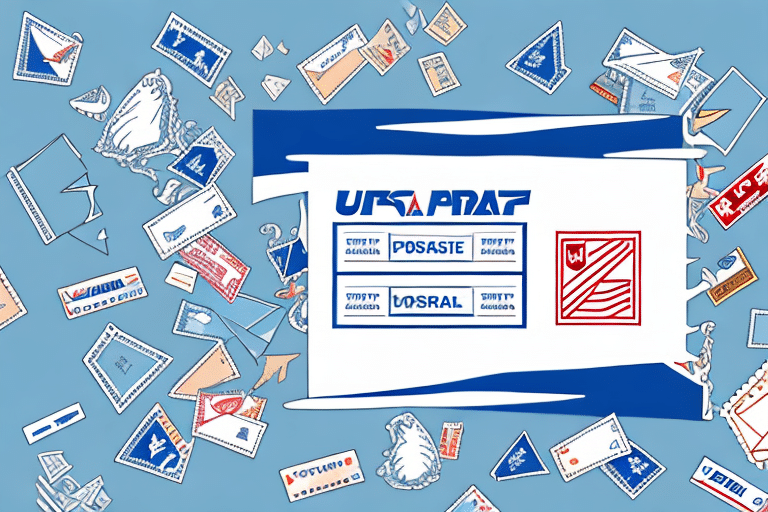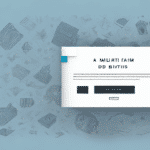Understanding USPS Priority Rates
USPS Priority Mail is a cornerstone of the United States Postal Service's shipping options, known for its reliability and efficiency. Navigating the complexities of Priority Mail rates and fees can be challenging. This comprehensive guide delves into what USPS Priority Mail entails, its advantages and disadvantages, rate calculation methods, influencing factors, flat rate box options, cost-saving strategies, comparisons with other shipping services, and best practices for packaging and labeling your shipments.
What is USPS Priority Mail?
USPS Priority Mail is a premier shipping service offered by the United States Postal Service, providing expedited delivery typically within 1-3 business days for most domestic destinations, including Alaska and Hawaii. Additionally, Priority Mail extends its services internationally, delivering to over 190 countries with varying transit times.
Key advantages of USPS Priority Mail include the ability to ship packages up to 70 pounds, complimentary shipping supplies, and delivery confirmation. Compared to private carriers like FedEx or UPS, Priority Mail often presents a more cost-effective solution for small to medium-sized packages.
Furthermore, USPS Priority Mail offers customizable options and robust tracking capabilities. Customers can select from a variety of box sizes and shapes, print shipping labels and postage online, and monitor their package's journey in real-time through the USPS tracking system.
Benefits of Priority Mail
- Fast and reliable delivery within 1-3 business days
- Free shipping supplies and packaging options
- Insurance coverage up to $50 included
- Real-time tracking and delivery confirmation
- Flat-rate shipping options for cost predictability
The Benefits of USPS Priority Mail
USPS Priority Mail offers numerous benefits for both individual and business customers. Its speed and reliability make it a preferred choice for time-sensitive deliveries. Additionally, the provision of free shipping supplies helps reduce overall packaging costs.
Priority Mail's delivery confirmation feature allows senders and recipients to track the package's progress, enhancing transparency and security. The service also includes options for additional protections, such as insurance and signature confirmation, catering to varying shipping needs.
A standout feature of Priority Mail is the availability of flat-rate shipping options. This allows customers to ship items of any weight or size within the designated flat-rate box for a fixed price, providing a straightforward and economical solution for shipping heavy or bulky items.
International shipping is another strong suit of USPS Priority Mail. With Priority Mail International, packages can be sent to over 190 countries, typically arriving within 6-10 business days. This service also includes free shipping supplies and comprehensive tracking features.
Advantages for Businesses
- Scalable shipping solutions for varying business sizes
- Discounted rates for high-volume shippers
- Integration with e-commerce platforms for streamlined shipping
How to Calculate USPS Priority Rates
Calculating the cost of shipping with USPS Priority Mail involves several factors:
- Distance: The farther the destination, the higher the shipping cost.
- Weight and Size: Heavier and larger packages incur higher fees.
- Additional Services: Options like insurance, signature confirmation, and expedited delivery can increase costs.
To estimate shipping costs accurately, utilize the USPS Shipping Calculator, which provides real-time rate estimates based on your package's specifications.
For shipments up to 70 pounds, USPS Priority Mail offers flat-rate pricing, allowing for predictable costs regardless of the package's weight or distance traveled. This feature is particularly advantageous for businesses shipping heavier items over shorter distances.
It's essential to consider seasonal variations, such as peak holiday periods, which may affect delivery times and rates due to increased shipping volumes.
Factors that Affect USPS Priority Rates
Several elements influence the cost of USPS Priority Mail:
- Destination: Shipping to distant locations or remote areas increases the overall cost.
- Package Weight and Dimensions: Larger and heavier packages require higher fees.
- Additional Services: Features like insurance, signature confirmation, and special handling add to the cost.
- Seasonal Demand: High-demand periods, such as holidays, can lead to rate fluctuations.
Moreover, businesses and frequent shippers may benefit from discounted rates through USPS Business Pricing, offering reduced rates based on shipping volume.
Understanding USPS Priority Mail Flat Rate Boxes
Flat Rate Boxes are a popular feature of USPS Priority Mail, offering a straightforward pricing model. These boxes come in various sizes and allow you to ship any item that fits inside, up to a maximum weight of 70 pounds, for a fixed price. This eliminates the need to calculate shipping costs based on weight or distance, providing predictability and potential savings.
However, it's important to assess whether a flat-rate box is the most economical choice for your specific shipment. For lightweight items, regular Priority Mail rates may be more affordable. Conversely, bulky or irregularly shaped items might not fit within flat-rate packaging, necessitating alternative shipping options.
Always compare shipping rates and consider the nature of your package to determine the most cost-effective and efficient shipping method. More information on flat-rate options can be found on the USPS Priority Mail Flat Rate page.
When to Use USPS Priority Mail Express
USPS Priority Mail Express is the fastest shipping service offered by the USPS, providing overnight delivery to most locations. This service is ideal for time-critical shipments requiring guaranteed delivery, such as important documents or urgent packages.
Priority Mail Express includes additional benefits such as free package pickup and insurance coverage up to $100. However, it comes at a higher cost compared to standard Priority Mail, making it suitable primarily for urgent or high-value shipments.
For more details on Priority Mail Express rates and services, visit the USPS Priority Mail Express page.
How to Save Money on USPS Priority Rates
Maximizing cost-efficiency when using USPS Priority Mail involves several strategies:
- Choose the Right Packaging: Select the smallest box or envelope that fits your item to minimize shipping costs.
- Utilize Flat Rate Boxes: For heavier items, flat-rate shipping can be more economical than calculating by weight and distance.
- Print Labels Online: Purchasing and printing shipping labels through the USPS website can offer discounts compared to retail locations.
- Combine Shipments: Consolidate multiple items into a single package to reduce overall shipping expenses.
- Take Advantage of Discounts: Businesses and frequent shippers should explore discounted rates through USPS business accounts.
Implementing these strategies can lead to significant savings, especially for businesses with high shipping volumes. For additional savings tips, refer to the USPS Business Shipping resources.
Comparison of USPS Priority Rates with Other Shipping Options
While USPS Priority Mail is a competitive option, it's essential to compare it with other shipping services to determine the best fit for your needs:
- USPS Priority Mail vs. FedEx: For medium-sized packages, USPS Priority Mail is often more affordable. However, FedEx may offer better rates for heavier shipments or specific service levels.
- USPS Priority Mail vs. UPS: UPS can be more cost-effective for large and bulky items, whereas USPS Priority Mail excels in affordability for small to medium packages and international shipments.
- USPS Priority Mail vs. DHL: DHL specializes in international shipping and may offer faster transit times globally, but USPS Priority Mail provides competitive pricing for both domestic and international deliveries.
Conducting a thorough comparison based on package size, weight, destination, and required delivery speed is crucial. Tools like the USPS Shipping Calculator and similar calculators from other carriers can assist in making informed decisions.
Best Practices for Packaging and Labeling Your USPS Priority Mail Packages
Ensuring that your packages are well-packaged and correctly labeled is vital for a smooth shipping experience with USPS Priority Mail:
- Use Sturdy Packaging: Select a durable box or envelope appropriate for the contents to prevent damage during transit.
- Securely Seal Packages: Use high-quality packing tape to seal all openings and reinforce edges.
- Protect Contents: Utilize packing materials such as bubble wrap, packing peanuts, or foam inserts to cushion items.
- Accurate Labeling: Clearly write or print the recipient's and sender's addresses, ensuring they are legible and correctly formatted.
- Include Return Address: Always provide a return address in case the package needs to be returned.
- Apply Labels Properly: Attach shipping labels securely and ensure they are not obscured by tape or other materials.
Following these best practices minimizes the risk of delays, damages, or lost packages. For more detailed packaging guidelines, refer to the USPS Packaging Guidelines.
How to Track Your USPS Priority Mail Package
Tracking your USPS Priority Mail package is straightforward and provides real-time updates on your shipment's status:
- Obtain a Tracking Number: When you purchase a shipping label, a tracking number is automatically generated.
- Use the USPS Website or App: Enter the tracking number on the USPS Tracking page or within the USPS mobile app to view detailed tracking information.
- Sign Up for Notifications: Receive automatic updates via email or text message regarding your package's transit and delivery status.
- Visit Your Local Post Office: In case of any issues, you can inquire about your package's status in person.
Efficient tracking ensures that both senders and recipients are informed about the package's journey, enhancing security and reliability.
Common Mistakes to Avoid When Using USPS Priority Mail
To ensure a seamless shipping experience with USPS Priority Mail, avoid the following common mistakes:
- Inadequate Packaging: Using flimsy or inappropriate packaging can lead to damaged items during transit.
- Incorrect Weight and Measurements: Failing to accurately measure and weigh your package can result in unexpected fees or shipping delays.
- Poor Labeling: Illegible or incomplete addresses can cause misrouting or delivery failures.
- Overlooking Insurance: Not insuring valuable items exposes you to potential losses in case of damage or loss.
- Ignoring Tracking Options: Foregoing tracking can leave you unaware of your package's status and increase the risk of undetected issues.
By being mindful of these pitfalls, you can enhance the reliability and efficiency of your USPS Priority Mail shipments.
Understanding the Different Shipping Zones for USPS Priority Mail
USPS Priority Mail categorizes the United States into eight shipping zones based on the distance between the origin and destination. These zones range from Zone 1 (local shipments) to Zone 8 (cross-country shipments).
The shipping cost increases with higher zone numbers due to the greater distance the package must travel. Understanding which zone your package falls into is crucial for accurately estimating shipping costs and delivery times.
For a detailed overview of the USPS shipping zones, refer to the USPS Shipping Zones Guide.
Best Practices for Packaging and Labeling Your USPS Priority Mail Packages
Adhering to best practices in packaging and labeling ensures the safe and timely delivery of your USPS Priority Mail packages:
- Select Appropriate Packaging: Choose a sturdy box or envelope that can adequately protect your items.
- Weigh and Measure Accurately: Ensure your package meets USPS size and weight requirements for Priority Mail.
- Label Clearly: Use clear, legible labels with accurate recipient and sender information.
- Use Quality Packing Materials: Incorporate bubble wrap, packing peanuts, or other cushioning materials to secure your items.
- Seal Securely: Apply strong packing tape to all openings to prevent accidental openings during transit.
- Consider Additional Services: Enhance security by opting for services like insurance or signature confirmation when necessary.
Implementing these practices minimizes the risk of damage, delays, and delivery issues, ensuring a positive shipping experience.
In conclusion, USPS Priority Mail stands out as a reliable and efficient shipping option for both domestic and international deliveries. A thorough understanding of its rates, benefits, and best practices can lead to significant cost savings and enhanced delivery performance. By leveraging the strategies and insights provided in this guide, you can optimize your USPS Priority Mail shipments for maximum efficiency and reliability.






















